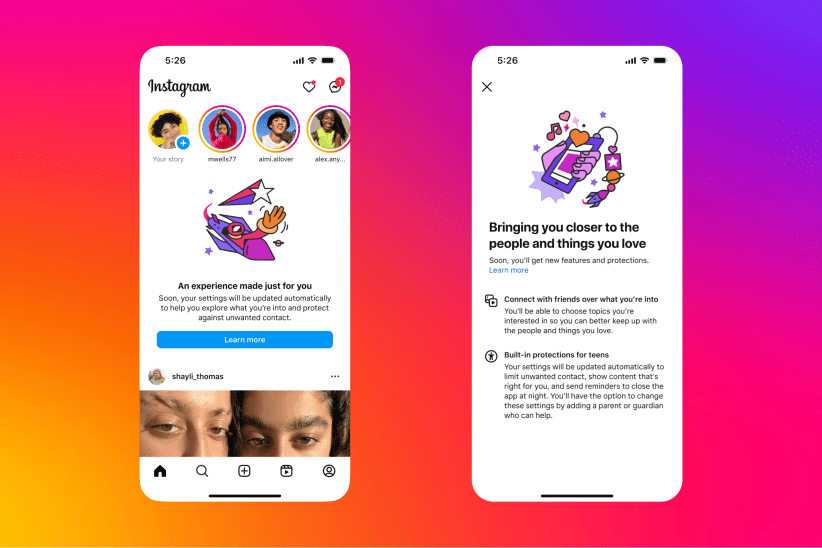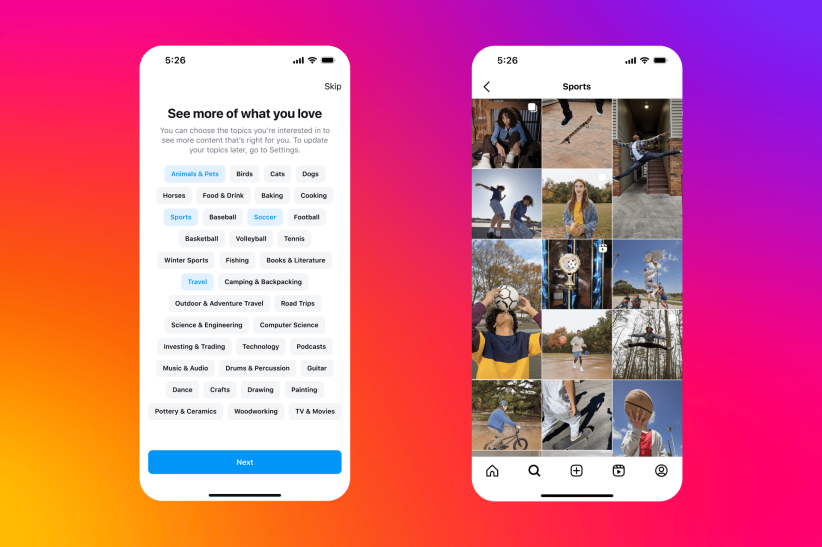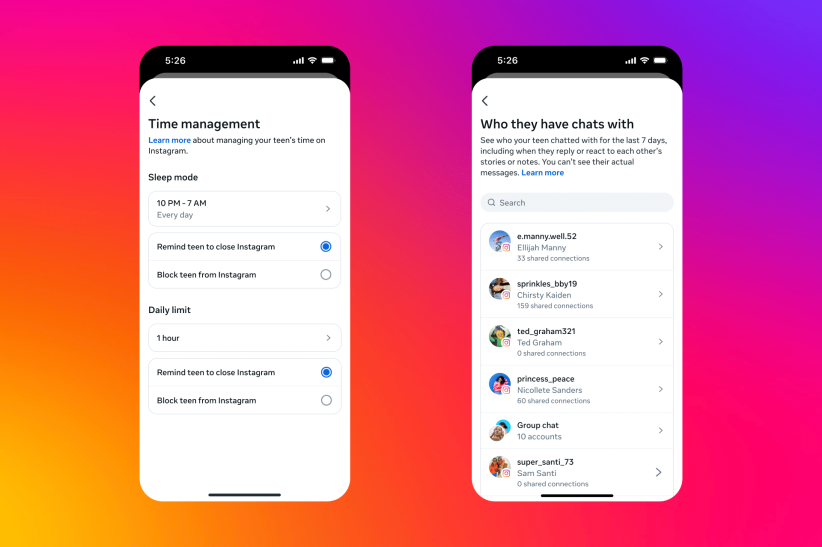
Meta Teen Accounts Aim to Revolutionize Online Safety
On Tuesday, September 17, Meta Instagram launched Teen Accounts and we had the chance to speak with a member of the Meta team and get some insight into what these new accounts will bring to families. This latest rollout of Teen Accounts is the first of its kind and a new approach to the growing concerns about the influence of social media on today’s teens. As teens are busy tackling loneliness and pressure from social media, parents are left wondering how they can help, and Meta wants to provide that support. The question remains: do these accounts really affect teens’ online safety?
Concerns on a national scale
Growing concerns about the impact of social media on children’s mental health have led to actions at both the state and federal levels. Last year, General surgeon Dr. Vivek Murthy stressed the need for parents to monitor their children’s social media behavior. In June, New York Governor Kathy Hochul said has passed two bills to make social media safer for kids. The federal government is also working on the Kids Online Safety Act to issues such as bullying and harmful content. Parents across the country are concerned about the lack of online safety measures for children on social media platforms and are calling on these platforms to do something about it.
Meta, one of the many social media platforms, has been criticized for not having adequate systems in place for teens. However, they are now the first to implement protections. This approach could change the social media landscape and start to keep kids safe, but it’s honestly too early to tell. What we do know is what these new accounts offer parents, how it all started, and everything you need to know about Teen Accounts.
We spoke with Liza Crenshaw, a member of the Meta team, to gain insight into what these accounts can mean for parents and what Meta’s goals are with teen accounts.

A conversation with Meta
What are some notable features that parents should be aware of?
Teen accounts were specially designed with the concerns of parents in mind. We spoke to so many parents around the world about their concerns when it came to their teens using social media. We heard that they had three big concerns: the first is contact, who their teens are talking to; the second is satisfaction, teens are watching content that is too mature or sensitive; and the third is time, is [a] Is the time teens spend on the app well spent? Are they scrolling too long, using the app at night or during school?
With those three big concerns in mind, we designed Teen Account protection to address those issues. We will change teen protection [accounts] automatically in private accounts. We also send reminders when teens have been on the app for 60 minutes. We set a function called sleep mode, which mutes notifications at night and automatically sends replies in DMS. [For example]if someone sends them a message [the reply will] participation, “[this person] is currently in sleep mode; they will contact you tomorrow morning.”
We are taking steps to limit who can message teens. Teens can only receive messages from people they are following or already connected to. That Real reduces the number of strangers who may be messaging teens and adults who aren’t Real suitable for teenagers to talk to. We also turn on our hidden words feature, which limits bullying or offensive comments in DMS. It’s really a full suite of protections that are built in and automatically turned on for Teen Accounts.

Are these new features easy for parents to use?
Yeah, so again, we designed this with parents in mind. We wanted to make sure that parents didn’t feel like they had an extra burden on their plate, but that they Real have the confidence to know that their teens are able to Using Instagram safely from the start. The idea with teen accounts is that teens are automatically placed in age-appropriate protection, and parents do not even have to do something.
However, if teenagers under the age of 16 want to change the protection, they must ask their parents for permission. Parents can be reassured that their teenagers cannot escape this protection unless they their consent. But we also know that some parents want to be more involved in their teens’ daily online lives, so we’ve added additional features that parents can choose to use, including messaging insights; parents can see who their teens have chatted with in the past week. They can’t Actually They can read their teen’s DMS, but they can see who they have spoken to and whether the teen has a common connection with those people.
Which is Actually one of my favorite features because I’ve heard from many parents that they love this because they can see if [for example] someone they know is bullying their child at school sends [their teen] a message, then that’s an opportunity for the parent to say, “Hey, I saw you were chatting with [this person]I know you’ve had conflicts, what’s going on there?” But it still lets teens do what they want. own the freedom and autonomy to send messages without their parents looking over their shoulder.
Nowadays kids have Finstas or Fake Instagram accounts where they lie about their age. How are these accounts going to work around that?
So from the beginning we knew that Teen Accounts wouldn’t work unless we stopped teens from lying or circumventing it. So we came up with a bunch of different ways to prevent of lying. For example, if a teenager tries to change his age from under eighteen to over eighteen, for example if he says: “I don’t want a teen account, I’ll just say I’m 25”, we ask him to verify his age with an ID or with a video selfie that estimates his age in the background.
We are also developing what we call an age prediction model that uses thousands of signals, including the type of language teens use, who they talk to, and how old their friends are, to give us a very accurate estimate of how old a teen is. When we see that there is a mismatch between the age the teens told us they were and the age our model predicts, then we will automatically place that person in a protective measure out of an abundance of caution.
We see it as a layered approach because it Real It’s a challenge to determine the age correctly, so we’re going to work on it a set of different corners.
These accounts are currently only available in specific locations, but are expected will be introduced globally in 2025. Can we expect to see additional features added to these guided accounts?
That could be. Right now we are mainly focused on getting this out there and right to the tens of millions of teenagers who will receive these changes. It is a Real fundamentally change the teen experience on Instagram, and we want to get it right first and foremost.
We expect there could be There will be some bumps, but we want to iterate and make sure people get this protection, and then we’ll see what the next step is.
We’re curious to hear from teens. What do they think of the Teen Accounts integration?
Are Actually Real interesting because we had an internal hypothesis that teenagers would hate this and not Real want to be placed in these protections. But what we actually heard and what we’ve continued to hear since the rollout is that teenagers themselves aren’t… Real want unwanted contacts in their DMS; they Real don’t want to see [certain] content. So they have Actually welcomed the changes to some extentand i Think of this particularly with younger teens. They see this as an opportunity to build trust with their parents and find a way to navigate social media together, rather than just the parents having complete supervision and control.
Are Real a way to start conversations. Especially younger teens, [feel] they can build a bond of trust with their parents, they can Set some boundaries and gradually the parent may be able to relax some things and give the child some more freedom.
We feel like this is an opportunity for parents and teens to have a two-way conversation in a way that still feels safe and age-appropriate, and get teens using Instagram again for all the good stuff, like discovering new artists to follow, connecting with classmates, talking to friends and family. I think people sometimes forget all the good things that come from social media, so our goal with this is to preserve the good and minimize the bad.
For more information about Instagram Teen Accounts, visit about.instagram.com.
Thalia Fernandez
 Healthy Famz Healthy Family News essential tips for a healthy family. Explore practical advice to keep your family happy and healthy.
Healthy Famz Healthy Family News essential tips for a healthy family. Explore practical advice to keep your family happy and healthy.


